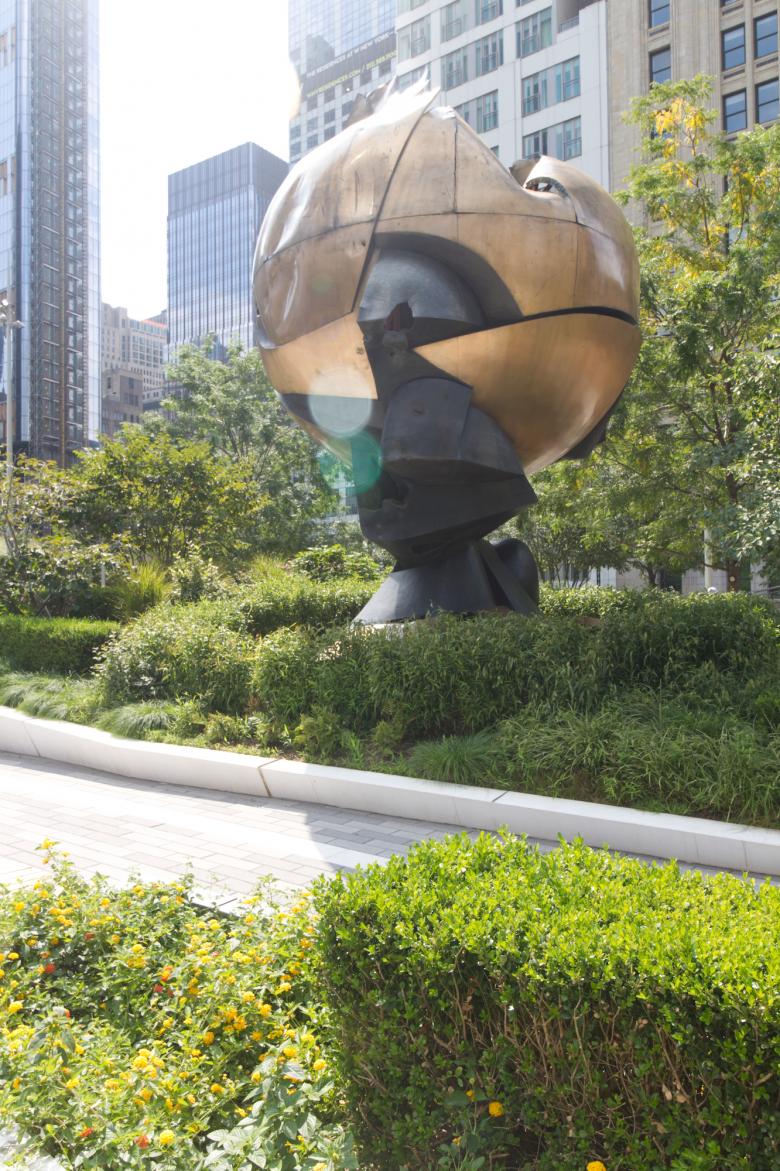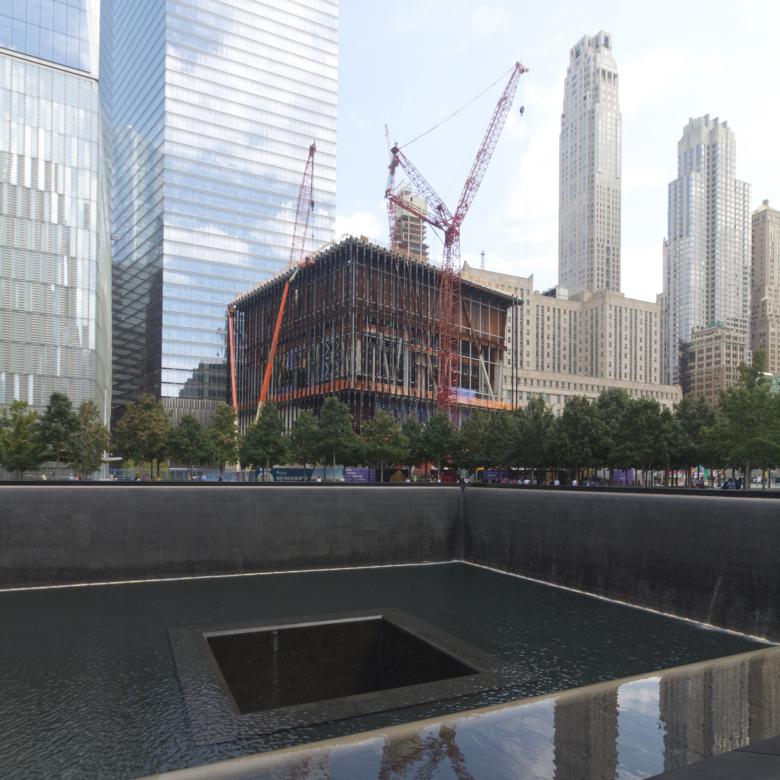All photographs by John Hill/World-Architects
Saturday, September 11, marks the 20th anniversary of the terrorist attacks on the World Trade Center in New York City. Much rebuilding has taken place on the 16-acre site in these two decades. Here we present a visual tour of the current state of the WTC in Lower Manhattan.
It's been five years — and the 15th anniversary of 9/11 — since we last took a comprehensive look at the transformation of "Ground Zero" into a memorial, transportation hub, office district, shopping mall, and cultural destination. Work is still being done on some of the pieces of the competition-winning masterplan courtesy of Daniel Libeskind, while some buildings are still in the planning stages. Visiting the site on a beautiful, partly cloudy morning a few days before the 20th anniversary, a lot of activity was taking place, especially construction and setting up for the commemorative events on Saturday. The photos below give a sense of what has been completed and what is underway.
First, some bearings courtesy of this map (south is up, FYI) on a fence bordering the future home of 5 WTC, a mixed-use tower designed by KPF; the site adjacent to Liberty Park is currently filled with Port Authority police trailers.
The eastern end of Liberty Park is occupied by
St. Nicholas Greek Orthodox Church and National Shrine, designed by Santiago Calatrava as a replacement for the church destroyed on a nearby site on 9/11. Calatrava's design was unveiled in 2013 but delays beset its construction, which
resumed last year amid the pandemic.
Many of the thin marble slabs that will cover St. Nicholas and allow it to glow in the evening hours are already installed.
The elevated Liberty Park, which opened in June 2015, was designed by Joe Brown, a design advisor to AECOM, with planters, trees, seating, and a direct connection to a bridge leading to Battery Park City. It is also the setting for Fritz Koenig's The Sphere, which sat on the plaza of the original WTC and was moved here in 2017 after spending fifteen years in Battery Park.
Liberty Park provides a panoramic view of the WTC, as in the photo at top, and closer looks at a couple of its towers:
4 World Trade Center, at right, designed by Fumihiko Maki and completed in November 2013; and
3 World Trade Center, to its left, designed by Rogers Stirk Harbour + Partners and
completed in June 2018.
Another view of 3 WTC and 4 WTC, seen from the 9/11 Memorial, shows the tops of the 80-story and 72-story towers, respectively.
Descending the steps at the west end of Liberty Park delivers people to the 9/11 Memorial Glade, which occupies the southwest corner of the 9/11 Memorial. Designed by Michael Arad and Peter Walker, who also designed the larger memorial, the Memorial Glade was dedicated on May 30, 2019.
The
9/11 Memorial, designed by Michael Arad in a competition that drew 5,200 entrants, opened on September 11, 2011, while the
9/11 Memorial Museum, designed by
Snøhetta and
Davis Brody Bond, opened to the public on May 21, 2014.
The 104-story
One World Trade Center (the tallest of the four planned towers), designed by
Skidmore, Owings & Merrill officially opened in November 2014.
REX is the Brooklyn firm of Joshua Prince-Ramus and PAC stands for the
Ronald O. Perelman Performing Arts Center. Though relatively short, the PAC occupies a prominent site between 1 WTC and 2 WTC overlooking the northeast corner of the 9/11 Memorial.
REX's design for the
PAC was
unveiled in September 2016 as a glowing box wrapped in translucent, veined marble laminated within insulated glass. A topping off ceremony took place on December 11, 2020, and the building is expected to
open to the public in 2023.
Last but not least is the
World Trade Center Transportation Hub designed by Santiago Calatrava, alternatively called the World Trade Center Oculus and Westfield World Trade Center. The $4 billion transit hub and underground mall
opened (quietly) to the public in March 2016.
Inside, the Oculus is adorned with large American flags that are hung below the ends of the long skylight that will open to the elements on the morning of September 11, 2021, one of many commemorative acts taking place at the WTC that day.















